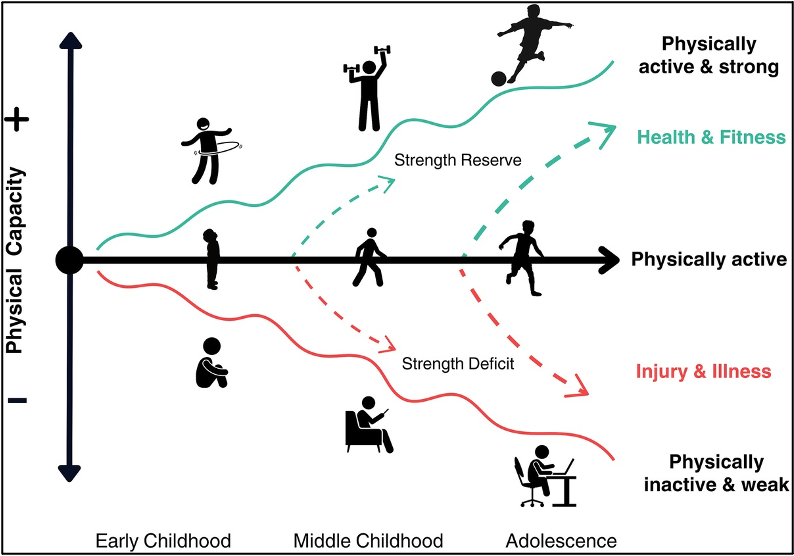Youth and Movement: Why it matters to us, and why it matters to you, too
Who remembers the Disney movie Wall-E?
An adorable robot, left behind on Earth to clean up the mess made by his creators. A thought-provoking movie on multiple levels, one of which is important to touch on here.
We all remember Wall-E and maybe his robot companion Eve, but who remembers the humans on the ship?
This worries me, and if I do my job in writing this, it will worry you too.
Isaac Asimov (or was it Hal McAllister?) once said “today’s science fiction is tomorrow’s science fact”, and Wall-E is no exception. Video games, cell phones, tablets, TV, and wearable technologies like virtual reality all pull at our kids’ attention, as they are all specifically designed to do so. And with more time spent on screens and indoors, less time is spent physically moving.
I am not here to demonize technology or discuss the merits of screen time limits; that is for the individual family to do. I am here to paint the picture of where we may be headed if we don’t take deliberate steps to cultivate our children’s relationship with movement and play in their natural environments.
Various studies completed around the globe have done the heavy lifting: looking into the past, present, and future children of the world and their physical activity. While the numbers vary slightly, few of them set an optimistic scene regarding physical activity:
1 in 5 adolescents meet international physical activity guidelines (Faigenbaum et al., 2023)
Declining sports participation rates among US adolescents (Deng and Fan, 2022)
Endurance, strength, and flexibility in youth ranging from four to 18 years old are declining, with conflicting results on speed and coordination (Eberhardt et al., 2020)
Physical activity is continually shown to have positive effects on many different facets of our health. These effects include but aren’t limited to stronger bones, healthier hearts and even increases in self-esteem.
Frederick Douglass is credited with the poignant line “It is easier to build strong children than fix broken men”, which fits right in with why this article was written in the first place. Getting kids to move and play early and often in their lifetime leads to healthier habits as they develop into adults and later into their lifetime.
Intrinsic Musculature Exercises
As a matter of fact, it may be the opposite. The same technology discussed earlier, for all its pitfalls, has also allowed each of us to accelerate our learning curves, connect with like-minded individuals outside of our geographic area, and explore alternate viewpoints (and maybe a few Instagram rabbit holes). As a matter of fact, technology is allowing me to reach you right now.
My view is that kids increasingly view physical activity as too challenging or don’t recognize how much fun being able to move your body can be. That’s why here at Sapphire we are motivated to do something about it.
Our After-School Program
Sapphire Physical Therapy is starting an after-school program aimed to help the community promote healthy movement habits for the next generation of Missoulians. This class will be tailored to the desires of the community and will emphasize having fun and building confidence by doing things that are physically challenging (appropriately challenging).
Would you like to know more? Visit the link below to find out more about the specifics of the class!
https://runsignup.com/Race/MT/Missoula/YouthMovementClass
Written by Ryan Stemple, MS, SPT3, CSCS
Resources
Faigenbaum AD, Ratamess NA, Kang J, Bush JA, Rial Rebullido T. May the Force Be with Youth: Foundational Strength for Lifelong Development. Curr Sports Med Rep. 2023;22(12):414-422. Published 2023 Dec 1. doi:10.1249/JSR.0000000000001122
Deng Y, Fan A. Trends in sports participation in adolescents: Data from a large-scale sample in the US adolescents. Frontiers in Public Health. 2022 Oct 31;10:960098.
Eberhardt T, Niessner C, Oriwol D, Buchal L, Worth A, Bös K. Secular trends in physical fitness of children and adolescents: a review of large-scale epidemiological studies published after 2006. International journal of environmental research and public health. 2020 Aug;17(16):5671.




